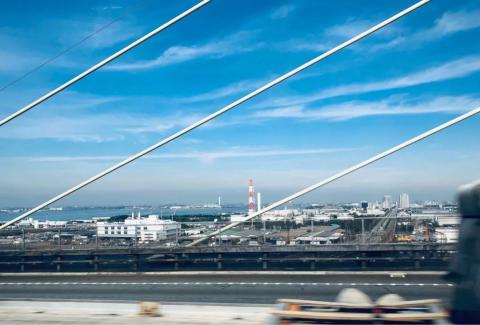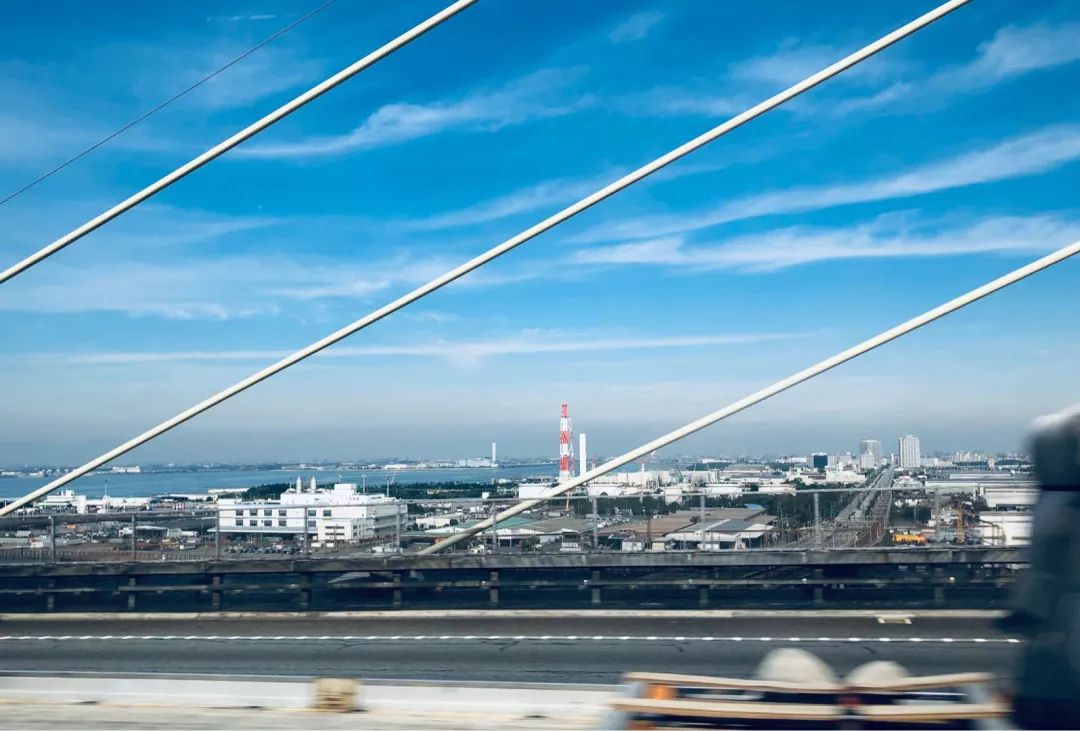
Because Nanchang only has direct flights to Osaka, our itinerary is only in and out of Osaka, so we still have to return to Osaka after arriving in Tokyo.



Drive all the way to Kyoto at high speed. Kyoto is known as the ancient capital for thousands of years and is the cradle of Japanese religion and culture, and the Golden Pavilion Temple is Kyoto's cultural business card.

When I came to Kinkakuji Temple, I had to mention one person, Brother Ikkyu. The Japanese cartoon "Smart Ikkyu" was once broadcast in China and left a deep impression on people in the 1980s and 1990s.

In fact, there is a person named Ikkyu in history. He is a very famous Zen monk in Japan. His Buddhist name is Ikkyu Sojun. He was born into a noble family, and his father was Emperor Gokomatsu during the Southern and Northern Dynasties of Japan. However, before Ikkyu was born, the Southern and Northern Dynasties of Japan were divided. The queen was jealous of Ikkyu's mother who was pregnant, so she thought that Ikkyu's mother was a descendant of Fujiwara, sympathized with the Southern Dynasties, and was dissatisfied with the imperial court. For this reason, she was kicked out of the palace. After leaving the palace, Ikkyu was born, so Ikkyu never enjoyed the life of a prince. Instead, he followed his mother's instructions and became a monk in the temple.


The filming location of the cartoon "Smart Ikkyu".


The ticket is very unique and is made into a peace charm.

Kinkakuji, officially known as Roenji Temple, is located in Kyoto City, Kyoto Prefecture, Japan. It is a temple of the Rinzai Sect Shokokuji sect and the most representative famous garden in Japan's Muromachi period. The name of Kinkaku-ji comes from the name of Ashikaga Yoshimitsu, the third generation shogun of the famous Ashikaga clan in the Muromachi period of Japan. It is also called "Kinkaku-ji Temple" because the outer walls of the core building "Relic Hall" in the temple are all decorated with gold foil. Golden Pavilion Temple".

Kinkakuji was built as a villa by Yoshimitsu, the third generation shogun of the Ashikaga family, in 1397. After Yoshimitsu's death, it was changed to the Zen temple "Bodhisho". It is said that the garden centered on the Golden Pavilion represents the Pure Land of Bliss, and the pond called Mirror Lake Pond complements the Golden Pavilion, which seems to be a representative scenery of Kyoto. Especially on a clear day, you can enjoy the magnificent Golden Pavilion and the blue sky reflected in the Mirror Lake Pond, just like an art postcard. Does the picture above look like a postcard? But do you notice anything wrong?

The Golden Pavilion and Mirror Lake complement each other, and the rocks, flowers and plants in the entire courtyard also match them harmoniously and beautifully. The beauty of the entire Kinkakuji Temple is gorgeous, uninhibited, ecstatic, and breathtaking. It is like a breathable painting, a fairy tale that you can walk into. This is also the essence of Japanese culture.

Yugatei, this is an Edo period style teahouse.



The maple leaves are red in the courtyard

After visiting the Golden Pavilion Temple, our group hurried to Zhuyuan Garden.

The weather was getting darker, and half of the sky was illuminated by the sunset.



Passing by the new internet celebrity travel check-in point: Fushimi Inari Taisha Shrine. It's a pity that we don't have this spot on our itinerary. It is said that the bird passage inside is worth seeing.

Zhuyuan is generally called Zhuyuan Street, which is the name of the neighborhood. It has a vast area. It extends to Yasaka Shrine in the east, Kenninji Temple in the south, the vicinity of Kamogawa in the west, and Shinbashi Street in the north. Due to time constraints, we only visited "Hanamikoji" "Turned half a circle.

Well-preserved ancient buildings

This is the location where the movie "Memoirs of a Geisha" was filmed. I have never seen this movie, but after searching on Baidu, I learned that "Memoirs of a Geisha" is a romantic drama directed by Rob Marshall. The film uses the heroine Sayuri to recall her tragic life. Zhang Ziyi plays the protagonist Sayuri, who has determined to be a geisha since childhood and has many entanglements with the famous geisha Hatsumamo played by Gong Li.

Izakaya


woman in kimono

Hanamikoji has been home to geishas since the Edo period, and it is one of the few places where geishas can still be seen. Generally, geishas can only come out to work at night. The number of geishas now is very small, only about 4,000, and they are only found in Kyoto. We happened to see two geishas and a man walking down an alley together. The bodyguards prevented them from taking pictures, so there were no pictures. Most of the people wearing kimonos in the photos are Chinese and Korean.




As night fell, we had to visit Osaka Castle Park according to our itinerary. Some of the group members in the same car might be too tired and wanted to go back to the hotel to rest. But with our persistence, we stayed in Osaka Castle Park for half an hour. We hurried to the castle tower and took some photos.

Osaka Castle was built by Toyotomi Hideyoshi in 1586. It is made of irregular stones and is majestic. The biggest attraction in Osaka Castle Park is the castle tower and the famous time capsule. The castle tower is inlaid with copper and gold plating and is very spectacular.








When we came out of Osaka Castle Park, it was completely dark. As the lights came on, our trip came to an end. As the saying goes:
The Golden Pavilion and Temple are shining with golden light,
The night view of the castle tower is bright.
Flowers see the crowds of people on the path,
There are so many girls in kimono.
Three families and six people visited Fusang,
It's fun and in a good mood.


After arriving at the hotel and putting our luggage away, we walked around the area near the hotel. There were many small restaurants, izakayas and family supermarkets open 24 hours a day in the streets and alleys.


In Japan, regardless of whether it is a large shopping mall or a small store, store signs have their own characteristics. Unlike domestic store signs, which are uniform and have no personality.




Seeing the word "canteen" in the name of this restaurant, I felt very friendly, so I had my dinner here. Ordered beef tongue, shrimp balls, grilled meat and sashimi, and egg fried rice. Maybe it was too late to eat, as the food was all eaten as soon as it was served, and there was no time to take photos. But Japanese food tastes really good.

The six days passed too fast. When I got on the plane and reflected on this six-day trip, the deepest feeling was not Japan's scenic spots or Japanese food, but the deepest impression was the cleanliness. It was hard to see even a cigarette butt wherever I went; there were only a few trash cans in the streets and alleys. Even in remote urban-suburban areas, this is still the case! Here, there are no big slogans or posters such as "Creating a Civilized Urban District"; there are no urban management team members busy back and forth, there are no scenes of aunts wearing armbands standing guard, and there are no aggressive "inspection teams" special health inspections. etc. Why is it so clean? It is a conscious behavior that goes deep into the bone marrow of everyone. This is a very terrifying power!
Secondly, it is quiet. For six days, we drove every day and did not hear a car horn. I even suspected that Japanese cars did not have horns. The streets and alleys were also quiet, and no loud noises were heard.
Then there is safety. The tour guide told us that in Japan, primary school students do not need to be picked up and dropped off from school. From time to time, we will see primary school students walking in twos and threes on the street. There is no car to pick up or drop off people. It is said that Japan's subways never require security checks, and you can come and go at will with large and small bags. The security check at Japanese airports is also very user-friendly. You can pass your carry-on items through the machine, unlike in China where people have to be touched up and down several times, which is very uncomfortable. This creates a paradox: the purpose of strengthening security checks is to improve the sense of security, but the security checks act as if you are facing a formidable enemy everywhere, just like every house has installed anti-theft nets. It feels like there are ferocious beasts and bad guys outside the nets. Setting up security checks everywhere will make people feel psychologically insecure.
There are also extremely high personal qualities and a comfortable environment. Littering, not walking on zebra crossings, not queuing, jockeying for seats, and making loud phone calls are behaviors I have rarely seen in Japan. You don’t have to worry about bargaining when you buy things here. All products are clearly marked with fair prices. If you drop something here, someone will take care of it for you and notify you to retrieve it. When shopping here, you don’t have to worry about finding the place. Just ask any local and they will answer you enthusiastically and even take you to your destination.
Of course, as a passing visitor, my perspective may be very one-sided, but this is precisely the problem: a person's occasional encounters in a foreign country can often affect his impression of the other country and its people. I have traveled to some countries, and Japan may be the place I want to go to again the most.

Goodbye, Japan; Goodbye, Mount Fuji!

